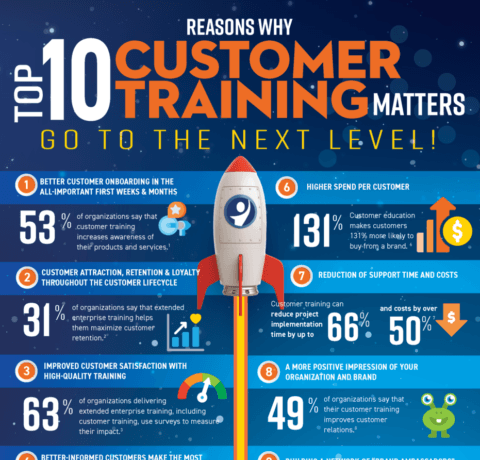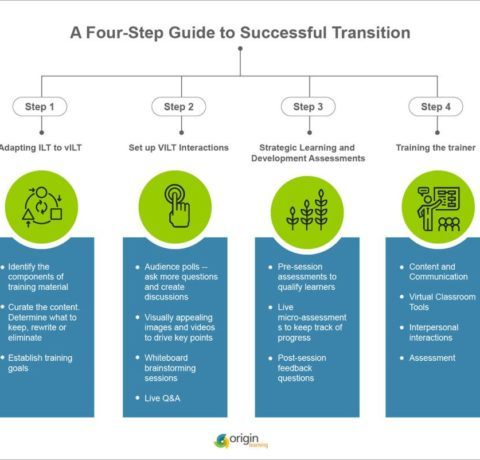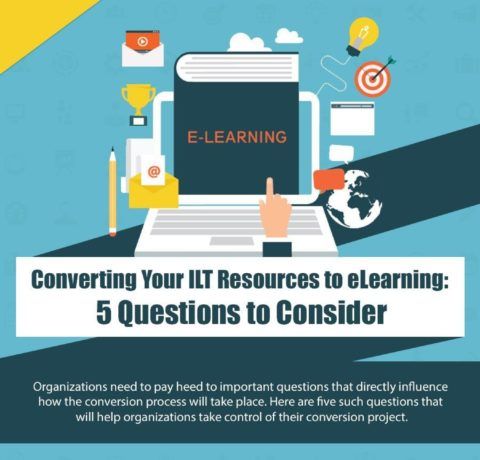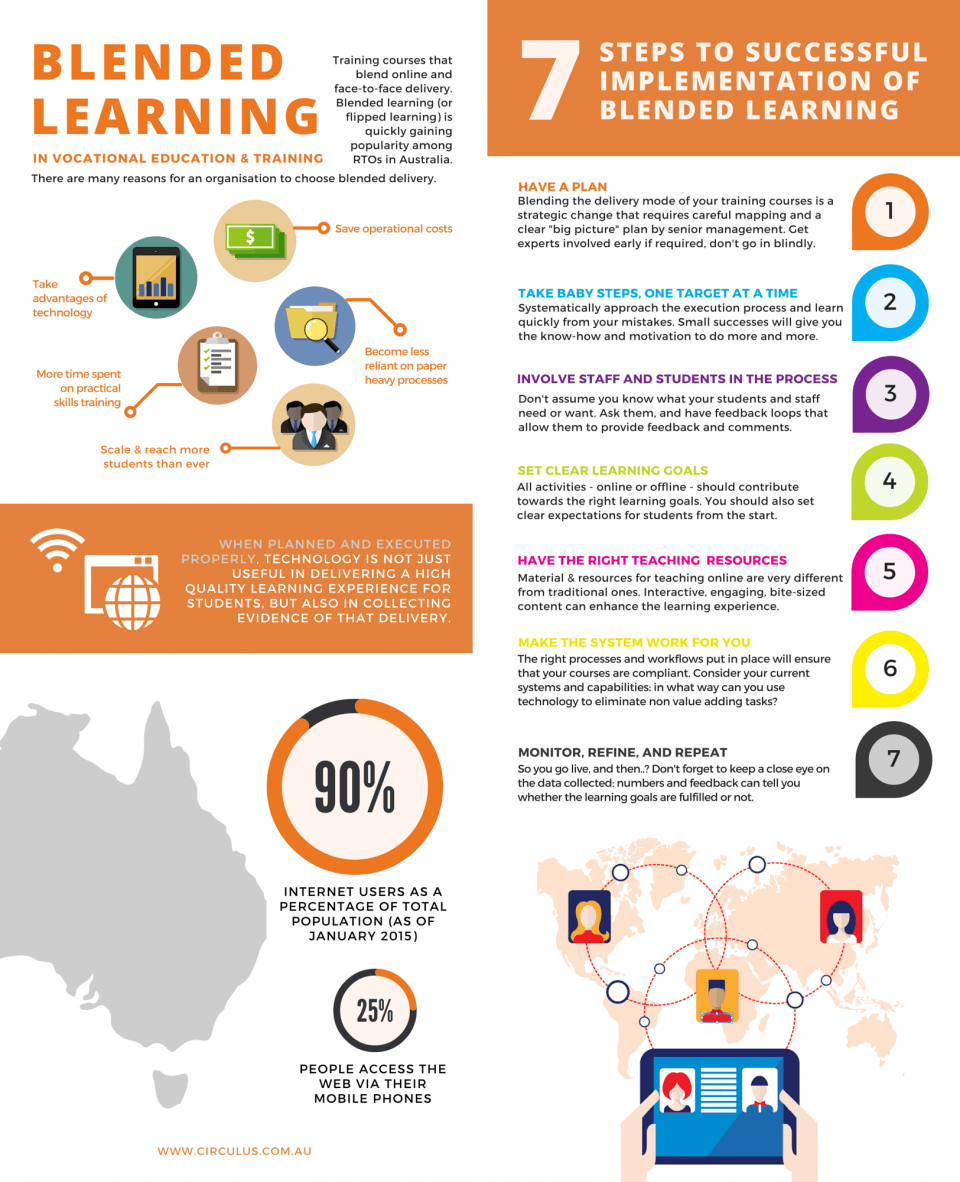Making Blended Learning Work Infographic
In recent years, we have seen more and more Registered Training Organisations (RTOs) evolving their teaching by incorporating blended and online delivery modes. Blended learning, hybrid education, flipped learning, digitally-led teaching,.. whatever you choose to call it, the new wave of digital evolution is making clear headway, as RTOs realise the benefits that this has brought them. Originally designed for vocational training organisations in Australia, however the advice from the Making Blended Learning Work Infographic can be applicable to almost any other school or training organisation. The Making Blended Learning Work Infographic presents why a training organisation or a school should implement blended learning, and the 7 crucial steps to successfully implement it.
A few key points:
There are many reasons why training organisations or schools should consider blended learning as a delivery mode:
- It provides more support and guidance than a fully online course. Consider your student needs: they may require a lot more tech support and hand-holding than you think.
- A great way to cut down on delivery and operational costs.
- Helping the school become less paper-heavy, eliminating human errors and non value-adding tasks.
- Giving the school an ability to reach more students and scale quickly, without the huge overhead costs.
- More face-to-face time is spent on practical skills training.
- Responding to the requirements and preference of today’s students who are tech-savvy and enjoy collaborating with peers and teachers in real time.
When used properly, technology helps organisations and schools to deliver a high quality, engaging learning experience to more students and to collect the evidence of that delivery.
7 Steps to Successful Implementation of Blended Learning
- Have a plan: Blending the delivery mode of your training courses is a strategic change that requires careful mapping and a clear "big picture" plan by senior management. Get experts involved early if required, don't go in blindly.
- Take baby steps, one target at a time: Systematically approach the execution process and learn quickly from your mistakes. Small successes will give you the know-how and motivation to do more and more.
- Involve staff and students in the process: Don't assume you know what your students and staff need or want. Ask them, and have feed back loops that allow them to provide feedback and comments.
- Set clear learning goals: All activities - online or offline - should contribute towards the right learning goals. You should also set clear expectations for students from the start.
- Have the right teaching resources: Material & resources for teaching online are very different from traditional ones. Interactive, engaging, bite-sized content can enhance the learning experience.
- Make the system work for you: The right processes and workflows put in place will ensure that your courses are compliant. Consider your current systems and capabilities: in what way can you use technology to eliminate non value adding tasks?
- Monitor, refine., and repeat: So you go live, and then..? Don't forget to keep a close eye on the data collected: numbers and feedback can tell you whether the learning goals are fulfilled or not.







You can adjust your cookie preferences here.